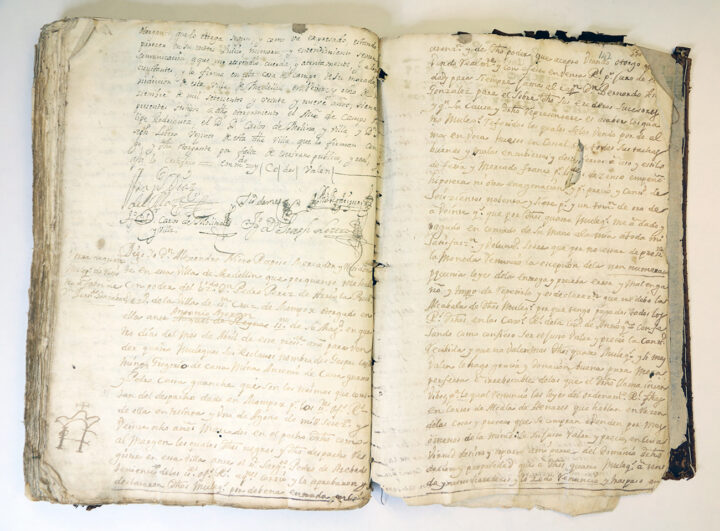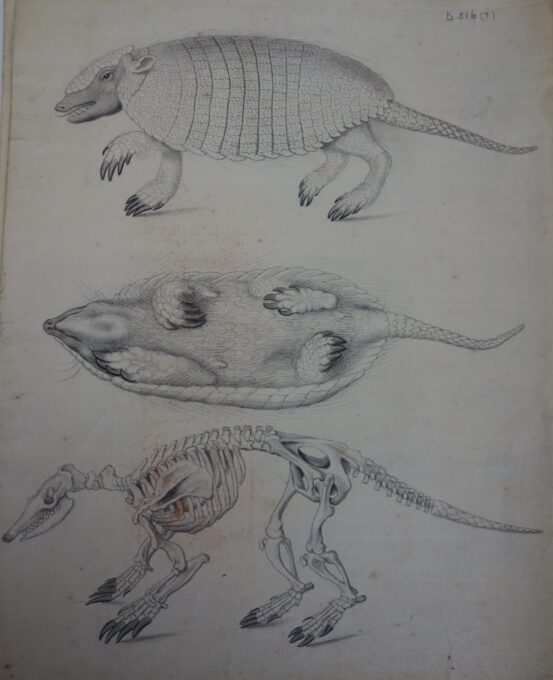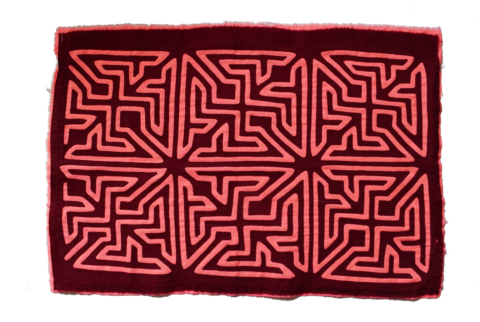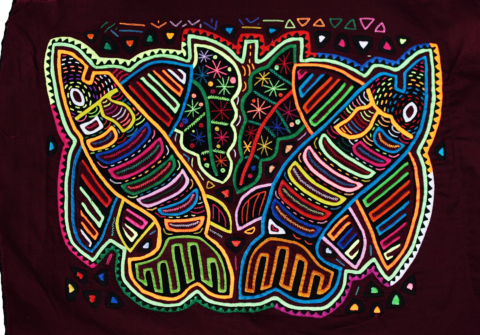Records are continuously being uncovered which provide new insights into Scotland’s and Britain's involvement in colonialism and enslavement – including in areas close to Darien following the abandonment of the colony in early 1700 and the Company of Scotland’s dissolution in 1707.
University Collections and the Colonial Archive

Surviving records of the Company of Scotland’s activities and legacies are piecemeal, scattered in archives across the Atlantic world.
Like other archives, the University of Edinburgh’s collections contain rare and understudied materials relating to the Darien ‘scheme’.
This manuscript fragment describes an account of a long voyage of a Company of Scotland vessel from Kirkcaldy Bay, Fife, to the port of Darien over 1698-99. Although difficult to read, the extract mentions the death of crewmen from fever o and the colonists’ first sighting of Caribbean islands.
|
||||
| Object reference | Laing Collection, La.II.669 |
|---|

This is an extract from the Memoir or Diary of Mr Francis Borland (1661-1722). Reverend Francis Borland’s unpublished memoir – the basis of his later publication, Memoirs of Darien (1722) – details the Presbyterian missionary’s experiences in New England and Suriname; his journey to, and time in, New Caledonia between 1699 to 1700; his recovery following Darien in Jamaica and New England; and his final return to Scotland in 1701.
Listen to a reading of an extract from Borland’s diary.
|
|

This is a 1729 deed of sale of two individuals described as being Guame (a group from present-day Ghana) and Guanche (from the present-day Canary Islands), in Antioquia, New Granada, a gold-mining region south of Darien. It indicates that agents of the South Sea Company had violently branded their bodies with a hot metal branding iron in the shape of its emblem to demonstrate its ownership over them. The South Sea Company was a British slaving corporation granted permission (asiento) by the Spanish Crown in 1713 to traffic Africans into Spanish America.
This document has been digitised as part of a collaborative project between the Archivo Histórico de Antioquia (Medellín, Colombia) and the University of Edinburgh, as part of the British Library’s Endangered Archives Programme.
|

This is an anatomical drawing of an armadillo collected by the Edinburgh-trained surgeon Dr John Burnet in Buenos Aires, Argentina. It was brought alive to Britain on a slaving vessel, the Wiltshire, in 1716. The armadillo died soon after its arrival. Its body was dissected, presented at a meeting of London’s Royal Society, and eventually entered the natural history collection of Sir Hans Sloane, the founding collection of the British Museum.
Burnet worked as a surgeon for the South Sea Company on the slaving vessel the Wiltshire, and at slaving outposts in Portobello and Cartagena, near to Darien. Burnet was one of many eighteenth-century British medical practitioners who used their professional roles within the transatlantic trade in enslaved Africans to collect natural history specimens and other so-called ‘curiosities’. Alongside the armadillo and other items that Burnet carried to Britain on the Wiltshire was a foetus. Though little is known about how Burnet acquired the foetus, the use of a racial identifier in an accompanying record suggests it was the outcome of a miscarriage or stillbirth of a captive African woman transported on the Wiltshire.
|
Today, the Gunadule people transmit their history primarily through oral tradition, storytelling, and the art of mola making. Each mola, a layered textile with complex, symbolic designs, reflects elements of Gunadule cosmology, including origin stories, spiritual protection, and cultural values. This textile art is considered a form of ‘writing’ for Gunadule women, who weave the narratives of their people into these patterns. Songs, rituals, and community gatherings further reinforce their ancestral knowledge, preserving it across generations.
Mola, a word in Dulegaya meaning 'clothing', is a unique layered textile that reflects the creation of Nana Ologwadule (Mother Earth).
‘The mola is the writing of women. Through it, they tell the story of origin story, political processes, education, culture, and the spiritual life of their culture. If the molas were to disappear, a significant part of ancestral knowledge would be lost’. - Amelicia Santacruz Álvarez, Gunadule leader, Professor at the University of Antioquia, and member of Duleome Mola, a collective of women mola weavers.
These two examples of molas are part of the Duleome Mola collections and were made by weaver women from the community of Ibgigundiwala. The first geometrical mola is the most ancestral and serves as a form of protection. This specific example represents the four cardinal points—east, west, north, and south—and is the mola that protects Nana Ologwadule (Mother Earth). The second figurative mola is more contemporary. It reflects the experiences and context of the weaver women, particularly their connections with the sea and fish, which represent sustenance. In Dule cosmogony, the sea is the grandmother and symbolises the source of nourishment for the family.
Click the images below to see the mola's in full.


